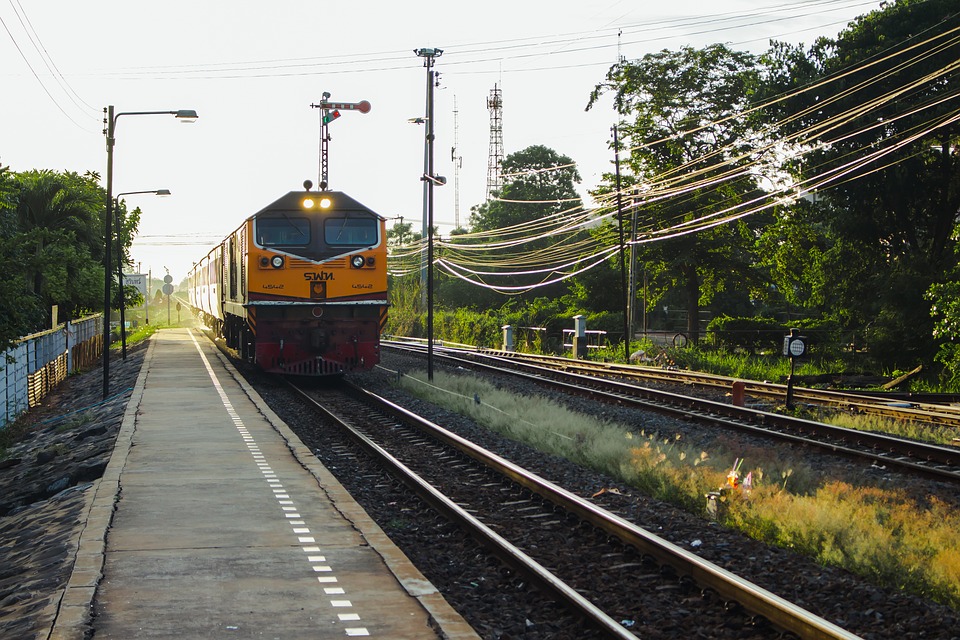Overview
- Traveling in Thailand: Options Available
- Choosing Train Travel: Benefits
- Classes of Trains: What to Expect
- Notable Train Journeys: Bangkok to Maeklong
- Experience the River Kwai: A Memorable Trip
Traveling the interior of Thailand offers various options, including planes, taxis, buses, and trains. Exploring Thailand by train is undoubtedly my favorite choice.
While planes are fast and convenient, they tend to be impersonal and can be quite expensive—ideal for those prioritizing time over cost. Taxis may provide an economical alternative for mid-distance journeys, with travel times around two hours from Bangkok (for example, trips to Pattaya or Ayutthaya) costing between 1500 and 2000 Baht (USD50-65). Buses are popular among locals for intercity travel; however, there are many unsettling stories of bus crashes attributed to drivers relying on stimulants to stay awake. Consequently, traveling by train emerges as the best method for traversing Thailand.
Train Travel in Thailand
Trains in Thailand are a safer option compared to buses and are usually more affordable than taxis or flights. Moreover, train journeys provide a stylish travel experience with picturesque countryside views from your seat. On longer trips, trains are excellent for meeting fellow travelers, as shared journeys often lead to meaningful conversations.
Bangkok to Chiang Mai
One popular route is the journey from Bangkok to Chiang Mai, favored by retirees and expatriates spending winter months in this vibrant northern city. The distance is just under 700 km, with travel time ranging from 11 to 12 hours on an express train. An overnight sleeper service is also available, allowing travelers to save time by traveling overnight and avoiding the cost of hostel stays.
Within the terminals, helpful English-speaking staff can assist visitors at information booths.
It’s essential to purchase a ticket before boarding, as train conductors will check tickets throughout the journey. Generally, trains depart punctually, though delays may occur due to the single-track system.
Various Classes of Trains in Thailand
Trains in Thailand offer various classes of travel options.
- Third-class travel is best suited for short local journeys, featuring thinly padded wooden bench seats. Most third-class passengers may need to stand in crowded conditions, making bus travel a more comfortable option.
- The 2nd class Pullman cars are considered the gold standard for backpackers, with seating arrangements that convert into beds for overnight travel. Your luggage can be securely stored on nearby racks, though it’s advised to keep money, passports, and valuables within reach while you sleep.
- While 2nd class air-conditioned carriages might be available, fans and open windows generally provide a more pleasant experience.
- Traveling first-class is an excellent option for those looking for comfort, privacy, and exceptional value.
Bangkok to Maeklong Trains
A fantastic train journey in Thailand is the 70 km trip from Bangkok to Maeklong. Travelers embark on this journey for its unique experience; the destination is often secondary to the adventure itself. The journey includes two segments, separated by a ferry crossing.
Notably, the railway passes through the hustle of a world-famous market, with train wheels rolling just inches from beautifully arranged fruit and vegetables displayed along the track.
The adventure begins at Bangkok’s lesser-known Wong Wian Yai station, running for about an hour to the end of the line at Samut Sakhon, also known locally as Mahachai. If you struggle to buy a ticket for Samut Sakhon, simply refer to it as Mahachai.
Train Going Through Maeklong Market
[embedyt] https://www.youtube.com/watch?v=wJpR9n-L680[/embedyt]
After taking a ferry across the river, visitors walk through Market Street to reach the local station, where the train departs for Maeklong (note that the “k” in Maeklong is pronounced like a “g”).
Upon arriving in Maeklong after approximately 55 minutes, be prepared for a breathtaking sight as the market is located at the city’s outer edge.
I recommend choosing a seat towards the back of the last carriage for an excellent view and capturing some stunning photos or videos of vendors lowering their awnings and repositioning their goods within seconds of the train passing.
[embedyt] https://www.youtube.com/watch?v=2sxuAm569IY[/embedyt]
While it’s also possible to observe from the front of the train, the scene is often less dramatic as the produce is typically cleared before the train arrives at the corner.
This railway line is not part of the national rail network, and you won’t find any information on train times listed on the State Railway’s website.
Bangkok to Kanchanaburi and River Kwai Train
A 5-day rail adventure to Kanchanaburi and the River Kwai provides an emotional journey for those wishing to pay homage to the POWs who constructed the iconic bridge over the River Kwai.
Travelers commence their journey in Bangkok, experiencing breathtaking countryside on the way to Kanchanaburi, followed by an exploration of the Thai-Burma railway.
While in Kanchanaburi, one day is dedicated to discovering local caves and delving into World War II history at the War Museum and Allied Cemetery. This is followed by a bamboo raft experience in the lush rainforest.
The next day features a ride on the infamous “Death Railway” before returning by train to Bangkok.
If you’re planning a journey through Thailand, consider traveling by train. This choice can transform a necessary trip into a memorable adventure!
Looking for accommodations in Bangkok? Explore local options and ensure a comfortable stay.
Aaron Christe shares photos, insights, and reviews of numerous beautiful Thai hotels during his travels.
—Follow him on Twitter @Sabai_Sabai or on Facebook at ThaiHotels





